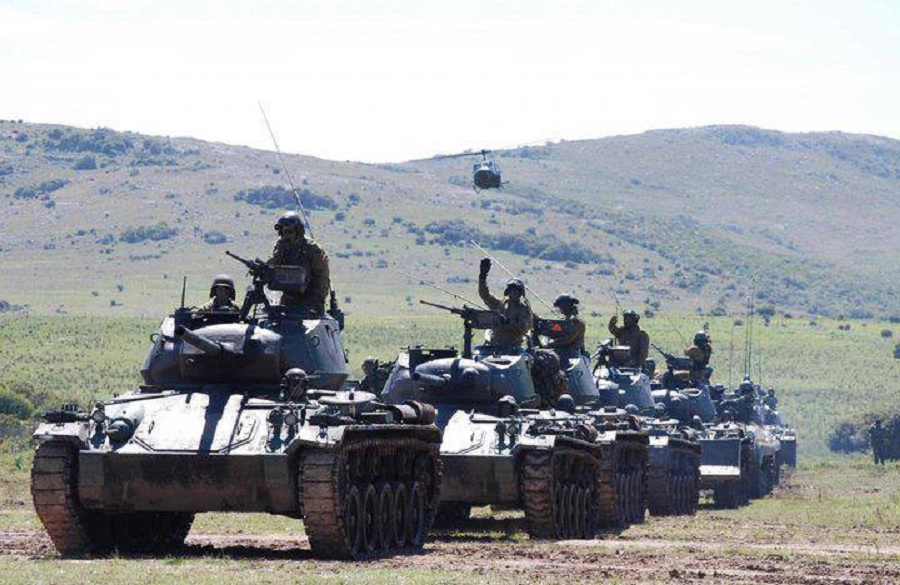RIO DE JANEIRO, BRAZIL – The Navy expects to receive the three Marine Protector class patrol vessels from the United States in the first half of the year, as well as purchase two new offshore patrol vessels or, alternatively, second-hand vessels that fulfill this role, to be delivered before the end of the current government’s term in 2024.
In parallel, negotiations are underway with partner nations for the delivery of additional vessels to replace the Navy’s fully obsolete fleet. One of the few ships expected to remain in service, the Luneburg class ROU 04 General Artigas logistics vessel, to complete its re-motorization process in early 2022, which will enable it to remain in service for a few more years.

With respect to the Naval Aviation, few changes are expected for 2022, with the exception of the possible delivery of an additional Beechcraft T-34C1 Turbo Mentor.
AIR FORCE
The Air Force continues a slow process of selecting a fighter aircraft to replace its aging Cessna A37B Dragonfly with no clear indications of a future solution to the problem.
Although direct negotiations are underway with both private suppliers and partner nations for the sale of both new and used aircraft, Uruguay’s financial limitations pose a complex negotiation process with many edges to be polished.
The urgency to receive new means meets the scarcity of resources and, as time goes by, maintaining the limited number of A37B aircraft available is becoming increasingly complex, and the gap to new means is widening even further, thus making the transition time to modern means stretch even longer.
The complexity of acquiring a modern LIFT vector, which would be ideal according to the FAU’s requirements, requires that technicians and pilots be trained virtually from scratch in the maintenance and operation of a type of aircraft entirely different from the ones the force has had for the past four decades. This process, if accomplished, will not be immediate and will take quite some time to be completed.
As the deadline approaches for the A37Bs to cease flying with no replacement selected, the Uruguayan Air Force may be left completely bereft of combat vehicles, with perhaps the sole exception of 3 or 4 Pilatus PC-7U Turbo Trainer aircraft with a very limited light attack capability.
HELICOPTERS
In addition, the force is in dire need of new helicopters, with a Bell 212 Twin Huey, a Bell UH-1H Iroquois and an Airbus AS-365 Dauphin currently operational. Although work is being done to place another UH-1H in flight order in addition to the second AS-365 being flown in Chile, the shortage of helicopters is critical, particularly in the summer when they are in great demand for firefighting and SAR surveillance.
There are no immediate solutions other than a few negotiations with partner nations for the transfer or acquisition at low prices of some additional means. As far as transport aviation is concerned, no major news has been received and no significant changes are expected for 2022, neither for training aircraft.
ARMY
In the case of the Army, although there are major shortcomings in terms of armament renewal in all of the force’s branches, there are very few real alternatives for this to happen. The few new items expected for 2022 come from donations from partner countries, including a consignment of old M-108 self-propelled howitzers from Brazil, a point defense radar from China and perhaps the transfer of a batch of MRAP RG-31 vehicles from the United States.
Other than that, there are no great expectations, although the force is experiencing heavy strain due to its participation in the fight against Covid-19 as well as in border patrolling, in addition to its regular domestic assignments and offshore deployments under the UN flag.
The force urgently needs to replace its armored vehicles, particularly the Russian Vodnik for which it is quite complex to receive spare parts for maintenance, as well as the fleet of Canadian AVGPs, which have become the backbone of peacekeeping deployments, but have also suffered the consequences of their extensive use.
While replacements for these vehicles are actively being sought, the scarcity of funds as well as the limited supply of similar vehicles on the second-hand market make it difficult to implement the replacement plan, at least in the short term. Moreover, there are limitations imposed by the UN regarding the age of vehicles that can be used in its missions, which implies that new armored vehicles must be relatively new, resulting in a high cost for their acquisition.
This complex financial equation will need to be quickly solved as soon it will be impossible to deploy any of Uruguay’s vehicles in these missions, which, paradoxically, are the ones that generate the needed funds to renew virtually all of the Uruguayan Army’s equipment.
With information from Infodefensa

